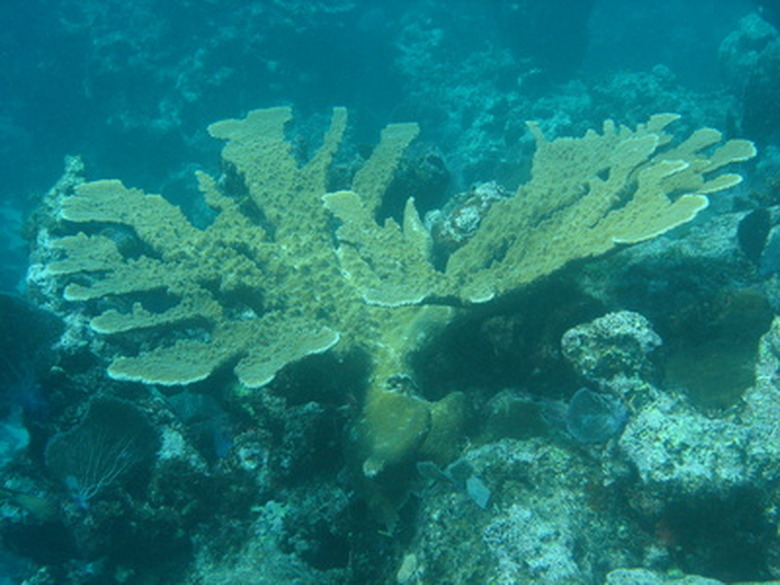Human Interaction With Coral Reefs
Coral reefs are structures under water formed by the calcium carbonate secreted by corals. Corals are colonies of tiny marine animals. Reefs typically grow best in warm, clear and sunny waters. Corals are usually found in waters that contain little nutrients. Reefs provide a home to more than 25 percent of marine life even though they take up less than 1 percent of the ocean's floor. Humans have had a grave impact on coral reefs whether through direct or indirect interaction.
Destructive Practices Near Coral Reefs
Destructive Practices Near Coral Reefs
Coral reefs in close proximity to human practices such as cyanide fishing and dynamite fishing have turned vibrant coral reef colonies into reefs containing very little life. The destructive forces of dynamite and cyanide fishing have overturned colonies and reefs alike, gravely impacting life.
Humans and Pollution
Humans and Pollution
Human-developed pollutants have caused a lot of harm to coral reefs. For example, the Great Barrier Reef off the coast of Australia is in close proximity to land that is 80 percent farmland. Fertilizers, herbicides, pesticides and other contaminants run off into the ocean and have negative consequences for the coral reef. Water also becomes less clear, which results in the coral reef not being able to have enough sun exposure to sustain itself.
Human-Induced Climate Change
Human-Induced Climate Change
Human-induced climate change has resulted in increased ultraviolet radiation, anomalies in ocean temperature and increased ocean acidification. High levels of ultraviolet radiation can result in tissue damage of coral organisms. The temperature of the ocean affects the outbreak of disease among the corals and the bleaching of corals. Increased ocean acidification causes the skeletal formation in many organisms, especially coral that secrete calcium carbonate, to change. This results in an inability to preserve and form the reef itself.
Depletion of Sea Life
Depletion of Sea Life
Since 25 percent of the ocean's creatures depend and evolve around the coral reefs, the depletion of the coral reef results in the depletion of other sea life including fish species. This not only effects the oceans, but humans as well, especially those populations who severely depend upon seafood for sustenance.
Diving And Its Impact
Diving And Its Impact
Diving around and near coral reefs can have a substantial impact on the reef. Divers touching coral heads can impact the health of the coral head. Divers taking photographs can accidentally crash into the reef. The bubbles that escape from breathing masks get trapped in caves and overhangs on the reef and can kill delicate sea life. The boats that bring divers to the site also pollute the water around the reef with petroleum products, sewage and trash such as aluminum cans, glass bottles and plastic bags. Incompetent operators have also been known to crash into the reefs with their boats.
Cite This Article
MLA
Kingston, Si. "Human Interaction With Coral Reefs" sciencing.com, https://www.sciencing.com/human-interaction-coral-reefs-6163911/. 22 November 2019.
APA
Kingston, Si. (2019, November 22). Human Interaction With Coral Reefs. sciencing.com. Retrieved from https://www.sciencing.com/human-interaction-coral-reefs-6163911/
Chicago
Kingston, Si. Human Interaction With Coral Reefs last modified March 24, 2022. https://www.sciencing.com/human-interaction-coral-reefs-6163911/
